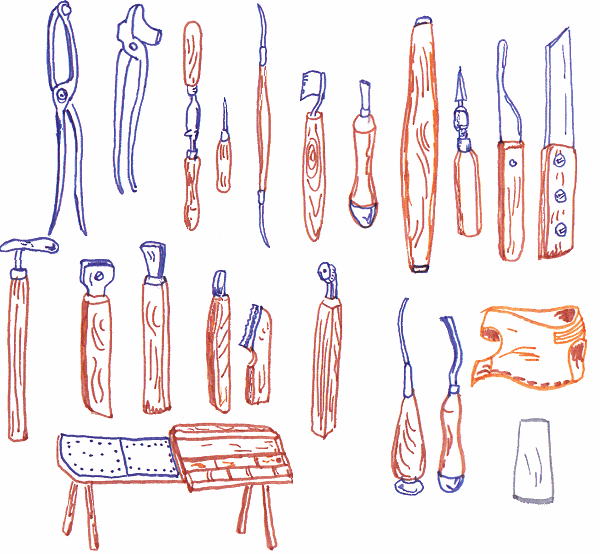

| The shoemaker could double up as a currier, making leather from the tannery fit for use including by the saddler. Boots were made to measure; and the shoemaker carried out repairs. He also provided the laces once using hempen fibres twisted with cobbler's wax (boiling hot pitch with a softening neat's foot oil) and a pig's bristle at each end to thread with. He was an important part of the village, cutting leather economically for shoe parts, making all boots and shoes including farm workers' boots which were simple and nailed for more grip. Shoes and boots were constructed with skill and made waterproof. |
| Now, of course, most shoes are mass produced and the skill of the man in the area has largely but not completely been lost. |
| Smedley, N. (1977), East Anglian Crafts, London: B. T. Batsford, images drawn from originals at 61 and 63, text at 51-53 and 62-66. |